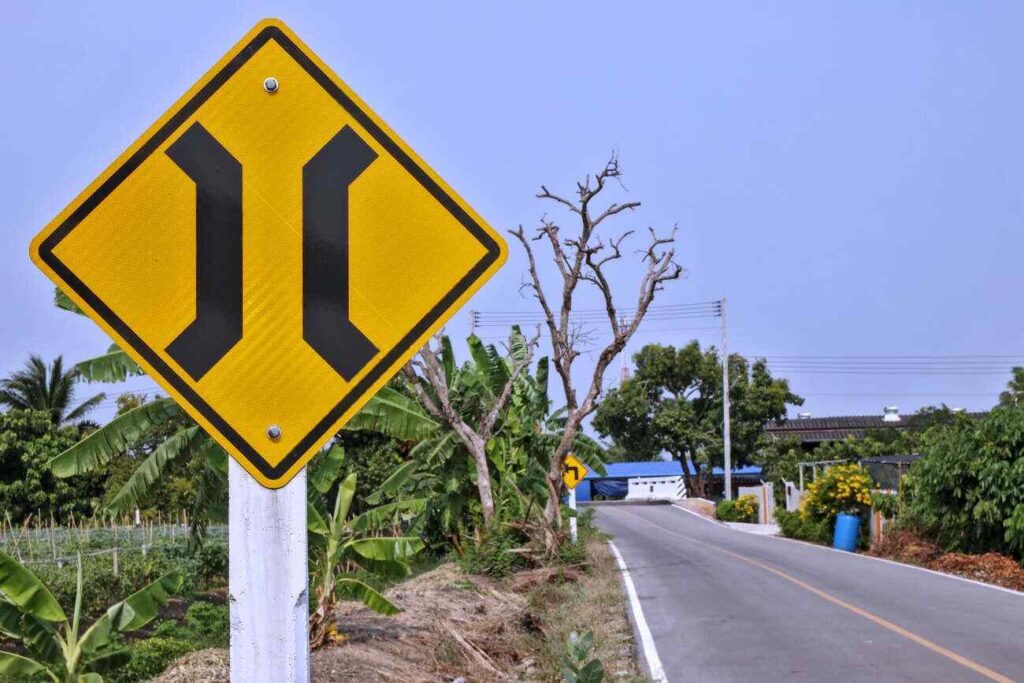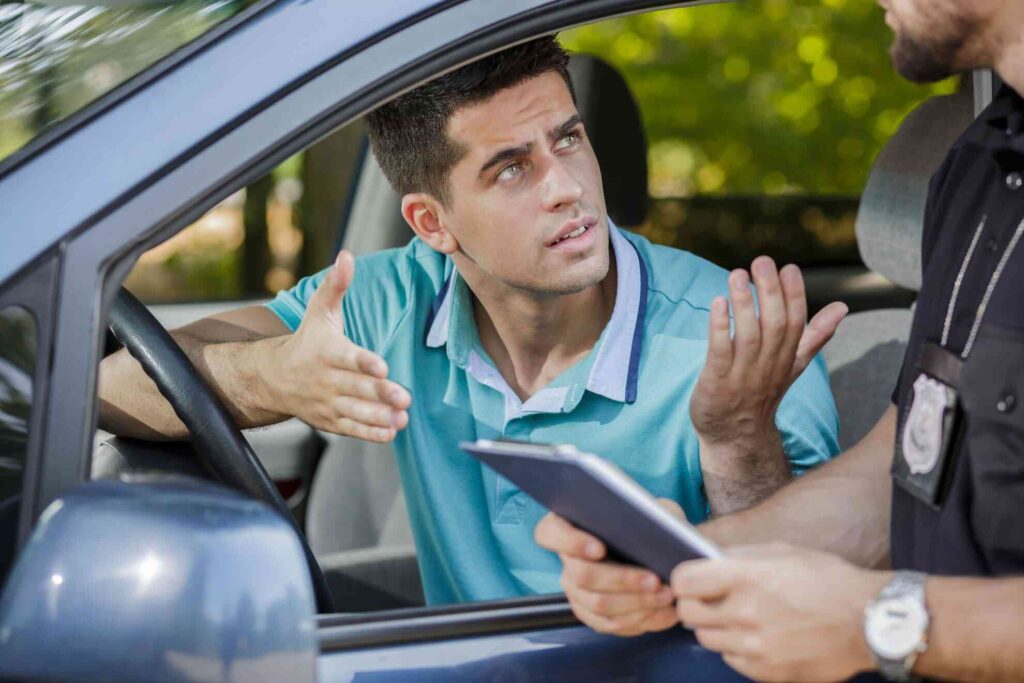Driving on the road means you share space with other cars, people walking, and bikes. To stay safe, you need to know traffic signs. These signs tell you rules, warn of dangers, and guide your way. If you ignore them, accidents can happen. In this post, we cover the top 10 traffic signs you must know. We explain each one in detail so you can drive better.
Knowing these signs is key for new drivers and those with experience. Data shows that not following signs leads to many crashes. For example, about 700,000 crashes happen each year at stop signs in the U.S., and one-third cause injuries. Also, in 2020, 7,089 people died at intersections without signals, often due to not stopping or yielding right. Around the world, road crashes kill 1.19 million people yearly. Many of these could be avoided by paying attention to signs.
Traffic signs have a long past in the U.S. Back in 1899, groups like the American Automobile Association started putting up signs to help drivers. In 1911, the first centerline was painted on a Michigan road. The first electric traffic signal came in 1914 in Cleveland. Then, in 1915, the first stop sign appeared in Detroit. Over time, rules got standard with the Manual on Uniform Traffic Control Devices (MUTCD). This book sets how signs look and what they mean across the country.
Signs fall into main groups by color and shape. Red signs often mean stop or no, like stop or do not enter. Yellow signs warn of risks ahead, such as curves or animals crossing. Green signs guide you, showing directions or allowed moves. Orange signs mark work zones. White signs with black text are for rules, like speed limits. Shapes matter too: octagons for stop, triangles for yield, diamonds for warnings.
For new drivers, here are some tips to learn signs better. Study them before you drive. Use apps or books from your state’s DMV. Practice by spotting signs on walks or rides. Stay alert on the road look ahead and scan sides. Talk out loud about what you see, like “That’s a yield sign, so I slow down.” Get glasses if needed to see clearly. Drive in low-traffic areas first to build skills. Remember, signs keep everyone safe.
Now, let’s look at the top 10 traffic signs you must know. We picked these based on how common they are and how they affect safety. Each one gets a full breakdown.
1. Stop Sign
The stop sign is one of the most basic traffic signs you must know. It stands out with its eight-sided shape, called an octagon. The color is red with white letters saying “STOP.” You see it at intersections where roads cross.
This sign means you must come to a full stop. That means your wheels stop moving completely. Look left, right, and ahead for other cars, people, or bikes. Only go when it’s safe and your turn.
Why is it important? Stop signs control who goes first at crossings without lights. They prevent head-on or side crashes. If ignored, it can lead to bad accidents. Stats show nearly 700,000 crashes at stop signs each year, with many injuries.
What should you do? Approach slow. Stop behind the white line or before the crosswalk. If no line, stop where you can see best. Yield to those who got there first or on your right.
Common mistakes include rolling stops, where you slow but don’t stop. This is illegal and risky. Another is not looking well – you might miss a kid on a bike.
Tips for new drivers: Practice in empty lots. Count to three at the stop to make sure you halt fully. In fog or rain, stop longer to check.
For example, at a four-way stop, the first to arrive goes first. If two arrive together, the one on the right goes. This rule keeps things fair.
Similar signs include all-way stop plaques under the sign, meaning all directions stop.
Knowing the stop sign well can save lives. It’s simple but powerful.
2. Yield Sign
Next on our list of top 10 traffic signs you must know is the yield sign. It has a triangle shape with three sides. The border is red, and inside is white with “YIELD” in red letters. You find it where roads merge or at roundabouts.
The meaning is clear: slow down and give way to others. If cars or people are coming, let them go first. You don’t always stop, but be ready to.
It’s important because it helps traffic flow without full stops. At on-ramps or turns, it cuts crash risks by making sure you don’t cut in.
Ignoring it causes side swipes or merges gone wrong. About 29% of crashes at signals come from not yielding right.
What to do: Reduce speed as you near. Look for gaps. If clear, go. If not, stop and wait.
A common mistake is speeding through, thinking no one is there. Or confusing it with stop – yield means slow, not always halt.
For new drivers, scan far ahead. Use mirrors to check behind too. Practice at quiet merges.
In a situation like entering a highway, yield to fast cars. Don’t force your way.
A related sign is the merge sign, which warns of lanes joining.
Master the yield sign for smoother drives.
3. Speed Limit Sign
Speed limit signs are key in the top 10 traffic signs you must know. They are rectangle-shaped, tall and narrow. Usually white with black numbers showing the max speed in mph.
This sign sets the highest speed you can go safely. Sometimes there’s a min speed too, like on highways.
Why important? Speed affects control and stop time. Too fast leads to more crashes. Many accidents happen from speeding past limits.
If you ignore it, tickets or worse crashes. Speeding is a top cause of deaths on roads.
What to do: Check your speedometer often. Adjust for weather go slower in rain.
Common error: Not noticing changes, like from 55 to 35 in towns. Or thinking it’s just a suggestion – no, it’s law.
New driver tip: Set cruise control if your car has it. Learn signs for school or work zones with lower limits.
For instance, on a country road at 55, slow to 25 near homes.
Related are advisory speed plaques, yellow for suggested slower speeds on curves.
Follow speed limits for safety.
4. Pedestrian Crossing Sign
The pedestrian crossing sign ranks high in top 10 traffic signs you must know. It’s often diamond-shaped and yellow, with a black symbol of a person walking. Sometimes rectangle.
It means people may cross ahead. Slow and watch for walkers.
Important because it protects those on foot. Crashes with pedestrians can be deadly, especially kids or elders.
Not heeding it leads to hits. Many urban accidents involve crossings.
Actions: Reduce speed. Stop if someone is crossing. Yield even if no stripes.
Mistake: Assuming no one is there. Or speeding up to beat them.
New drivers: Look side to side. At night, use headlights.
Example: Near parks, kids might dart out.
Similar: Bike crossing signs with bike symbol.
This sign saves lives on busy streets.
5. Traffic Signal Ahead Sign
This warning is vital in the top 10 traffic signs you must know. Diamond shape, yellow, with lights symbol.
It tells you a traffic light is coming. Prepare to stop if red.
Why? Gives time to slow, avoids sudden brakes. Cuts rear-ends.
Ignore and you might run reds, causing broadsides.
Do: Ease off gas. Check light color from far.
Error: Not slowing, then hard brake.
Tip: In new areas, watch for these to anticipate.
Situation: On fast roads, it prevents surprises.
Related: Stop ahead signs for stops.
Stay ready with this sign.
6. No Parking Sign
No parking signs are common in top 10 traffic signs you must know. Rectangle, white with red text “NO PARKING” and maybe times.
Means don’t park there. You can stop briefly, but not leave car.
Important for flow blocks fire lanes or views.
Ignore: Tickets, tows, or block traffic leading to crashes.
Do: Find other spots. Read for times, like no park 8-6.
Mistake: Thinking short stop is ok long-term.
New: Check signs when parking.
Example: In cities, no park on streets for cleaning.
Similar: No stopping, stricter.
Obey for hassle-free drives.
7. No U-Turn Sign
In the top 10 traffic signs you must know, no U-turn is rectangle or circle, red-white, with U-arrow slashed.
No turning around in road.
Why? Prevents blocks or head-ons in busy spots.
Ignore: Accidents from unexpected turns.
Do: Go to next safe spot for turn.
Error: Doing it anyway, risking fine.
Tip: Plan route to avoid need.
Situation: At lights, wait for green arrow instead.
Related: No left/right turns.
This keeps traffic moving right.
8. School Zone Sign
School zone signs are must-know in top 10 traffic signs. Pentagon or rectangle, yellow-green, “SCHOOL ZONE” or kids symbol.
Means school nearby slow, watch for children.
Important: Kids unpredictable, protects them.
Ignore: High risk of hitting child. Lower speeds mandated.
Do: Drop to posted speed, often 20 mph when flashing.
Mistake: Not slowing outside hours – check times.
New drivers: Extra caution mornings/afternoons.
Example: Near playgrounds too.
Related: End school zone.
Prioritize kids’ safety.
9. Railroad Crossing Sign
Railroad crossing is key in top 10 traffic signs you must know. Round yellow advance or white crossbuck at tracks.
Warns of trains – stop if lights flash or gates down.
Why? Trains can’t stop fast, crashes fatal.
Ignore: Many deaths yearly at crossings.
Do: Look both ways, never go around gates.
Error: Rushing across.
Tip: Turn down radio to hear.
Situation: Rural areas with no gates.
Related: Number of tracks sign.
Respect rails for life.
10. Construction and Detour Signs
Last in top 10 traffic signs you must know are construction signs. Diamond or rectangle, orange-black, like “ROAD WORK AHEAD” or detour arrows.
Guide through work zones safely.
Important: Workers and changes mean hazards.
Ignore: Crashes in zones high.
Do: Slow, follow arrows, no phone.
Mistake: Speeding through.
New: Merge early.
Example: Follow detours to avoid closed roads.
Related: Worker signs.
Stay safe in orange zones.
For more information visit Traffic signs test.
Conclusion
These top 10 traffic signs you must know cover basics for safe driving. From stop to construction, each plays a role in preventing issues. Review them often. Practice spotting on drives. Safe habits reduce risks.
Remember, signs are there to help. Follow them, and you help everyone. Drive smart.


